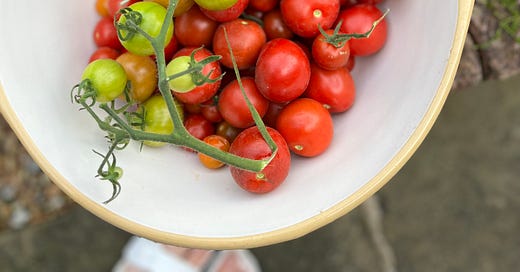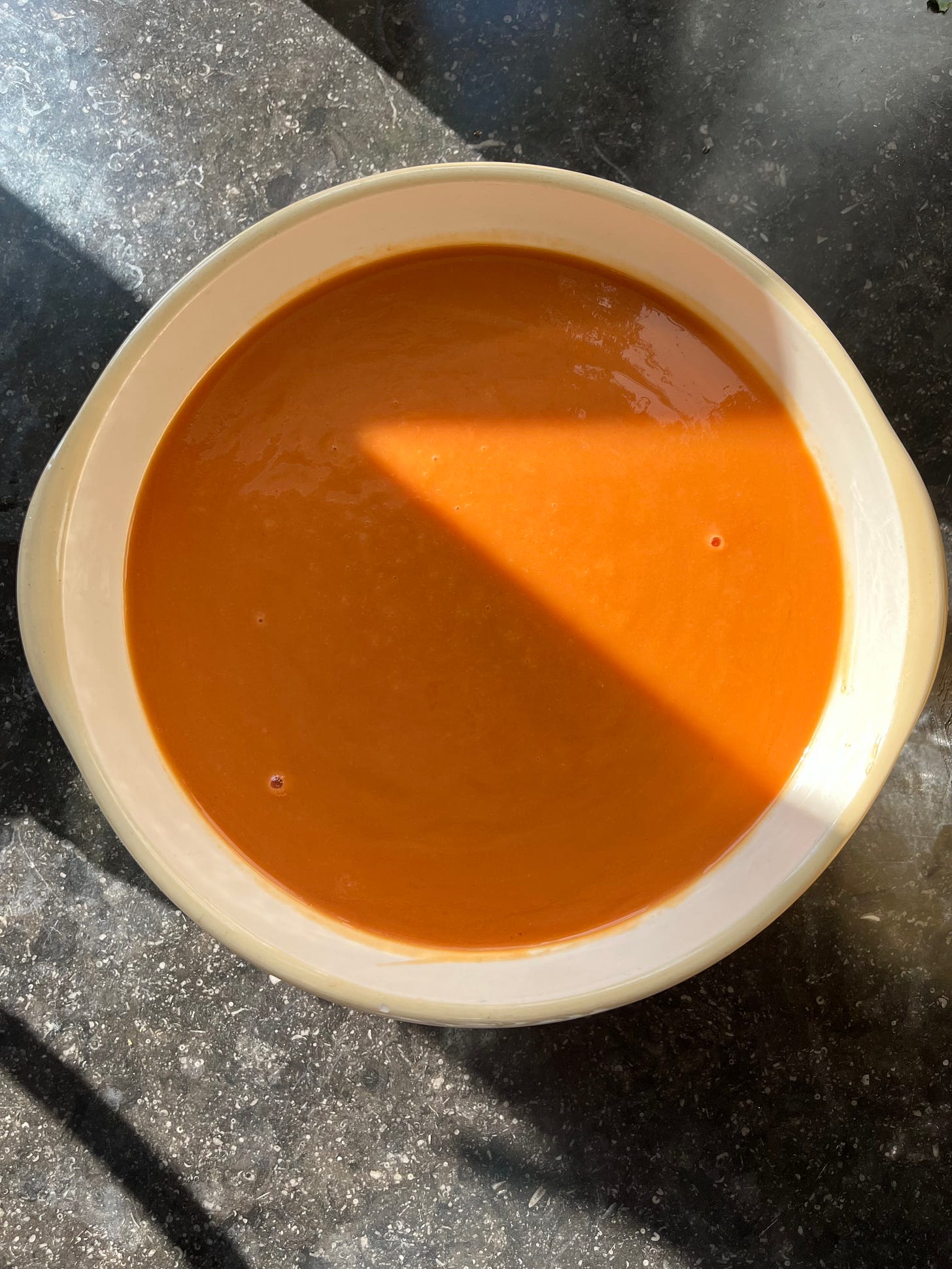Greenhouse Tomatoes and Vines
School shoes may have already sold out but I have a stash of delicious roasted tomato in the freezer, for soups and sauces.
I finally have a copy of Anna Jones’s latest cookbook Easy Wins which I recommend without hesitation. Anna has carefully curated her 12 hero ingredients, from olive oil, to miso, to mustard and tahini, to tomatoes. I love this approach to food and cooking; challenging oneself to find inspiration in cherished ingredients. I’ve been playing with ideas of what my list of 12 hero ingredients would include. Starting with my mother for guidance, she always said there were two ingredients she couldn’t cook without - lemons and tomatoes. She grew both plentifully in her garden in Kent, the tomatoes housed in her much loved poly-tunnel and the citrus encased in giant terracotta pots bathed in sun in the Summer and housed in custom made huts in the winter, to enclose them from the cold. It is a running family joke that the citrus trees are better accommodated than most family members.
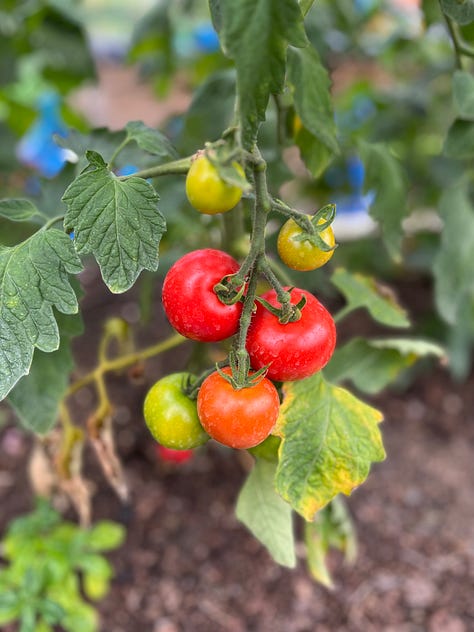
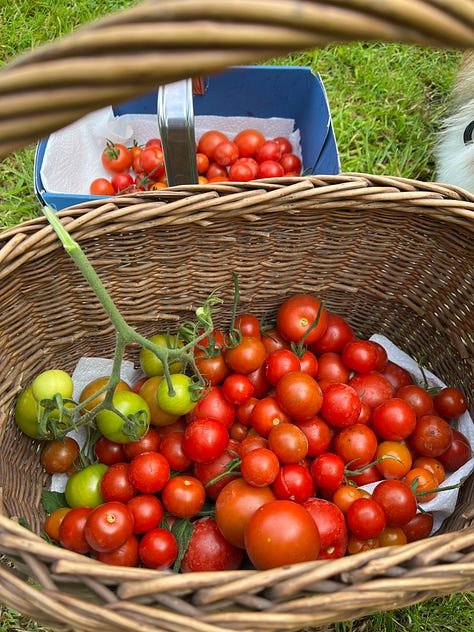
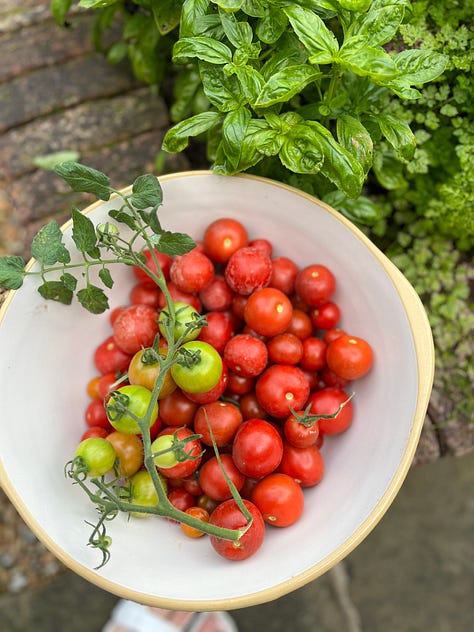
Right about now, somewhere in between late August and early September, my mother’s garden produces a mountain of tomatoes. There is every size and colour of tomato and vine entangled together, they grow happily alongside cucumbers, as well as parsley and basil. The smell of tomatoes when you enter a greenhouse is distinctive, grassy and green. Perfumers have tried to bottle the scent of Green Tomato Vine, such is its addictive quality. My favourite one was gifted to me by a friend and is made by Jo Malone, I would recommend as a gift for a loved one. The leading hypothesis for their smell is an innate and ingenious system of pest control. What smells good (to me), apparently does not smell great to most insects. The aroma of the oils produced in the plant protect the leaves and stems from nibbling pests.
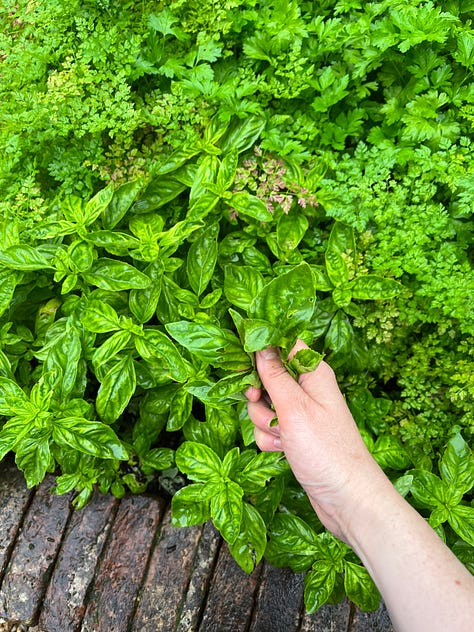
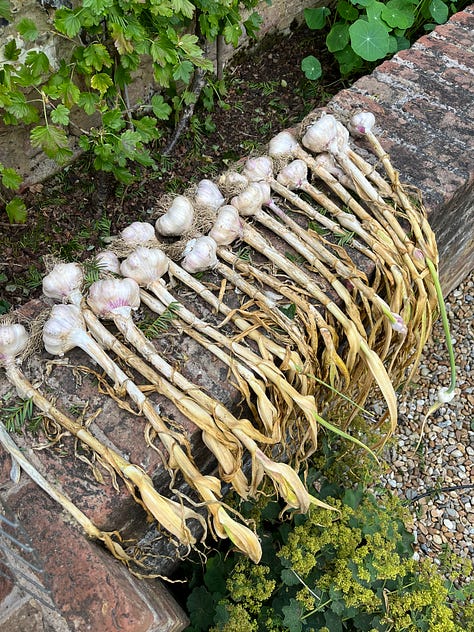
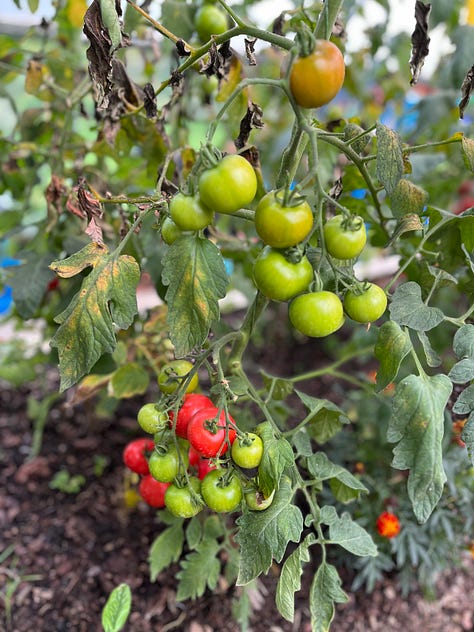
In Autumn, and in preparation for the darker months of Winter, my mother would harvest huge trays of tomatoes, to prep and store a homemade roasted tomato sauce. She dragged out her trusty Kenwood blender for the occasion, to make multiple batches. Good tomatoes are just wonderful to eat and not to be missed, the process encouragingly couldn’t be simpler. It has become an end of Summer tradition to carry on the tomato harvest, it marks the beginning of term time and back to school in our home, offsetting the chaos of preparing for the new school year. The school shoes I need to buy may have already sold out… but I have a stash of delicious roasted tomatoes in the freezer, ready for sauces, soups and risottos.
In and around local farmer’s markets and suppliers you will now find your nearest tomato haul ready for eating and I encourage some back to school escapism by finding the most beautiful ones and preparing them for your freezer. To do so: simply harvest the tomatoes, wash well and pack into a roasting tray, cutting the larger ones in half. Generously scatter with olive oil, sea salt and any herbs (basil, parsley, oregano), add garlic if using. Roast until the tomatoes have collapsed, around 20 minutes or so at 180C fan oven. Cool, blend with a stick blender and press through a sieve. You now have the most beautiful and flavourful tomato base for so many dishes including this warming soup. Now to finalise my 12 hero ingredients, my internal debate continues, tomatoes have made the cut, just 11 more to go…
Green House Tomato Soup
ingredients
1 onion, peeled and diced
2 garlic cloves, peeled
2 sticks of celery, trimmed and diced
500ml of Greenhouse tomato puree
300ml homemade vegetable stock
1 teaspoon sugar, or more as needed
sea salt and black pepper
1-2 tablespoons double cream, to taste (optional)
In a large soup pot soften the onion, celery and garlic cloves in 1-2 tablespoons olive oil, until translucent and soft (this should take around 15 minutes or so). Add the roasted tomatoes/ or the roasted tomato puree you have stored. Cover with the vegetable stock. Bring up to a boil and simmer for 5-10 minutes. Cool until you can safely blend the soup, I find a stick blender is easiest. Strain the soup through a regular household sieve and push through the soup with a ladle. Keep the strained soup and discard the seeds and skins. Finally, add the double cream, sugar, salt and pepper to taste and maybe with a toasted sandwich on the side.


